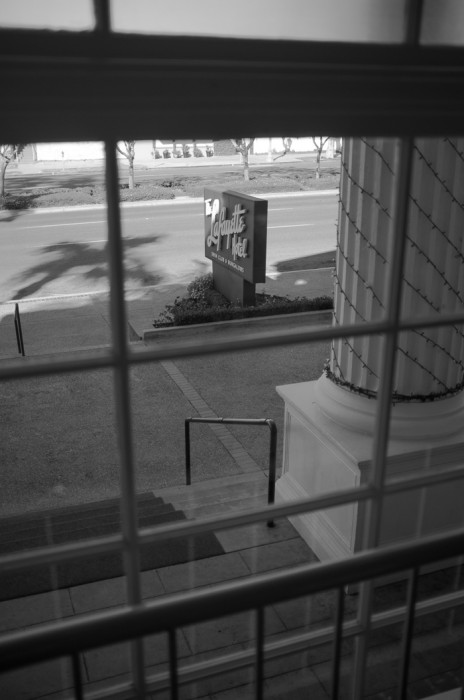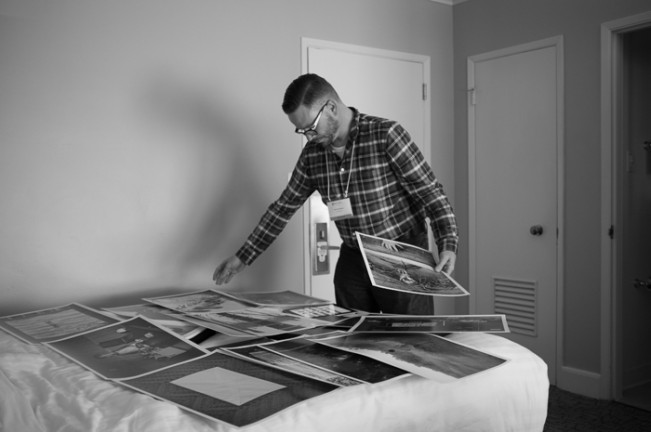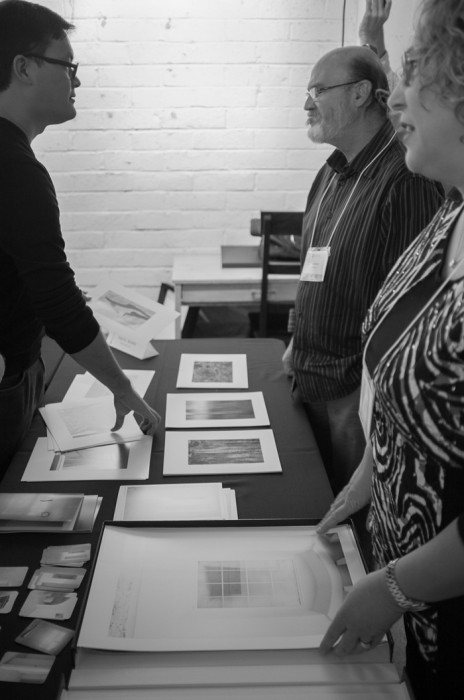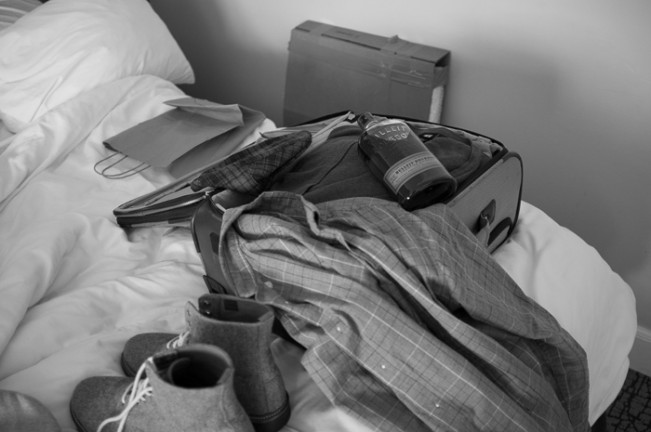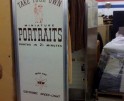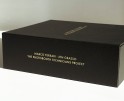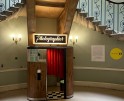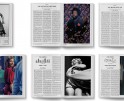The 2013 Medium Festival of Photography by Jeremias Paul and Kurt Simonson
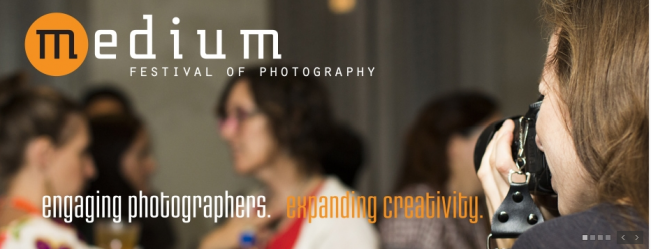 2013 marked the second year of the Medium Festival of Photography, located in San Diego, California and spearheaded by photographer and festival director, Scott B. Davis. I had the great pleasure of attending the inaugural year (2012) as a reviewer and educator, making new friends and coming away inspired about all things photography. I was disappointed to miss the event this year, as it conflicted with Paris Photo, so I asked two warm, insightful, and talented photographer friends, Jeremias Paul and Kurt Simonson, to report on their experience at the festival this year. Thank you to both for their impressions and reporting talents.
2013 marked the second year of the Medium Festival of Photography, located in San Diego, California and spearheaded by photographer and festival director, Scott B. Davis. I had the great pleasure of attending the inaugural year (2012) as a reviewer and educator, making new friends and coming away inspired about all things photography. I was disappointed to miss the event this year, as it conflicted with Paris Photo, so I asked two warm, insightful, and talented photographer friends, Jeremias Paul and Kurt Simonson, to report on their experience at the festival this year. Thank you to both for their impressions and reporting talents.
Jeremias starts the conversation:
In Conversation: The Medium Festival
From November seventh until the tenth, I attended the Medium Festival of Photography held at the Lafayette Hotel in the North Park neighborhood of San Diego, CA. The following conversation is between my fellow artist and roommate at the festival, Kurt Simonson, and myself as a reflection on our experiences about the festival and the portfolio reviews we attended there. But first, let me set the scene.
I arrived the day before, flying in from Cedar City, Utah, to get my bearings and decompress a little from my busy mid-semester grading frenzy back at school. Having attended last year’s Medium Festival, I couldn’t help but notice the shift of venues from what seemed more New York City last year, to something a little bit more Palm Springs in nature, which I actually quite prefer. The waiver relinquishing my right to stockpile large quantities of booze in my hotel room initially caught me off-guard; so much for Fear and Loathing in San Diego! However, the accommodations and neighborhood did quickly prove to be very well chosen.
The picture of the incredible community surrounding my hotel room for the next several days revealed itself very quickly over the next few hours. Upon leaving my hotel for the first time to buy some bottled water at the neighboring liquor store, I was immediately welcomed as an out-of-towner and serenaded by the clerk in his mother tongue. What an amazing way to realize I was not in Utah anymore! Later, down the street feeding my afternoon coffee fix and discovering my local breakfast café, I was welcomed into a very friendly conversation about the purpose of my visit and photography, which eventually swayed into an argument between the staff about the implications of advertising the cafe on Trip Advisor. Needless to say, I loved walking into a neighborhood where I felt the community had a genuine outreach toward the interests of the conference I was attending. This spirit was exemplified to me through the remainder of the weekend throughout San Diego, where photography is truly alive and thriving in the local psyche.
On to the conversation…
Jeremias Paul: Well, hi Kurt, it’s been a little over a week since we were roomies and first subjected ourselves to the scrutiny of the reviewers followed by the welcome respite of the lectures given by so many amazing photographers. Thanks for joining in on this conversation. I’m excited to hear about your perspective.
Kurt Simonson: Thanks Jeremias, and of course Aline too, for asking me to join you in sharing our thoughts about the Medium Festival. First, for those of you who don’t know me, I’m a photographer and educator from Long Beach, California. It’s exciting to be writing a post for Lenscratch, and it’s fitting to write about Medium, considering that last year’s inaugural festival was the first time that I met both you and Aline.
JP: That’s right. That is where I first met both you and Aline as well, so it seems a testament to the bonds you can build at such an event. I think before we go any further, I’d like to applaud all those involved in putting this year’s festival together, especially director Scott B. Davis and assistant-director Anna-Leigh Zinza. I believe they did an amazing job in creating a very harmonious experience between the attendees, presenters, and reviewers over the course of the whole weekend. Through Scott’s emphasis at the beginning of each day’s events on kindness and friendship, he created a comfortable space for photographers and curators to come together to inspire and motivate each other.
Having spent most of my life on the East Coast, my decision to attend the Medium Festival last year stemmed from my desire to meet more of the West Coast photo community. I also decided to take the plunge and do the reviews. Although my newest body of work was in its infancy at the time, I really wanted some critical feedback about my ideas and images, which I had not formally received since grad school over 7 years prior. I met so many wonderful people who have become good friends, and as a result of the feedback and encouragement given to me, my work has progressed. This year, I was excited to go back to the Medium Festival for that same eye-opening, rejuvenating experience, and I was not disappointed.
KS: Last year’s Medium Festival was the first Portfolio Review event that I had ever attended. I had only recently heard about the existence of review events after being mentored by David Bram and Jennifer Schwartz as part of their inaugural Flash Powder Retreat in the summer of 2012. Prior to that, no one had really told me these things existed or what to expect from them. Turns out, I had an amazing time at that first Medium, then went on to attend Photo NOLA a few months later, and then Photolucida in April of this year. I can’t say enough good things about all three of these festivals/events. Aline has written beautifully about this already, but there’s such a spirit of community and camaraderie that is fostered during these times, both between fellow photographers and between the reviewers and the attendees. I’m incredibly grateful for the friendships that I’ve made, whether or not “opportunities” for my work came about, because for me it really is more about being part of a larger community of artists across the country.
I knew I wanted to go back to Medium this fall for a couple of reasons. First of all, it’s closer to home for me, and I appreciate the chance to connect with more people regionally and locally. It’s also smaller, so it’s a little easier to get to know everyone and make those connections. As you already noted, the festival’s director, Scott B. Davis, worked hard to foster a sense of unity and friendship, which I think he succeeded at doing. It was great to reconnect with him and with others that I had met last year, while also being introduced to many new people.
JP: Those are really great points. You certainly had a very fruitful progression since last year, which brings me to my next thought about approaching all of this. I feel like I’ve taken the last year to hone my work’s direction, so preparedness seems like a vital point of discussion. What I feel really helped me out in getting ready to put my work in front of reviewers again was simply writing a lot about my pieces. This allowed me to better evaluate the feedback I had received last year. It took me several weeks of deeply analyzing what was said to me by my reviewers before I was able to disconnect from my own intuitions about the work and incorporate some of the responses I had received. In the end, I feel I developed a more refined body of work. Additionally, I redesigned my website and made some leave behinds and business cards, all correlating to each other. This, too, created more introspection and spurred growth. Kurt, I feel like you came into this year with quite a bit of momentum. How did that prepare you?
KS: The timing of the Medium Festival was a bit crazy for me, but very serendipitous. Just two weeks before the festival, I had installed a solo show of my Northwoods Journals project in the gallery of the university where I teach. Trying to select, print, frame, and hang a solo show, while also trying to get multiple portfolios ready for review, while also trying to teach a full load, is not something I’d recommend to anyone. Thankfully, however, it allowed me to be in a frame of mind where I was fully immersed in my work and fresh off new thoughts and conversations about it. Best of all, I now had a set of documentation images to show the reviewers some of my installation and exhibition design ideas.
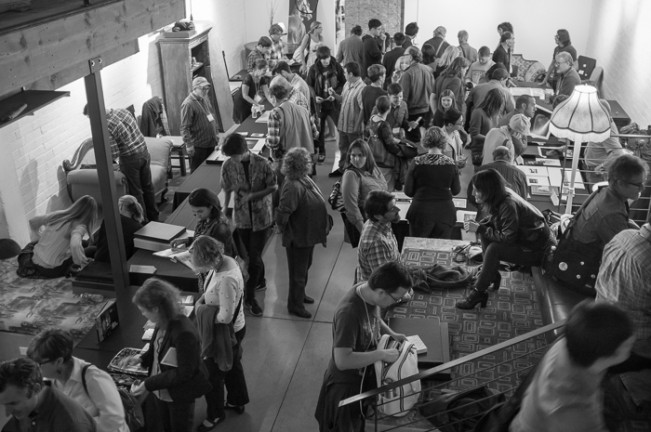
On Thursday night portfolio sharing continued into the night at the open portfolio-sharing event hosted by 3RDSPACE ©Jeremias Paul
JP: Oh yeah, I forgot about the full-time teaching load we both shoulder! I know you were able to build up that frame of mind through taking a sabbatical from teaching last spring. Now that you are back to teaching a full load, how do you plan to sustain that flow from one event to the next to keep the ground you’ve gained?
KS: I think right now, more than anything else, I’m trying to take an intentional season of rest! But you are right, it’s critical to remain aware of the momentum (or flow) of your work, professionally, and that takes a lot of work. This includes checking in on relationships over email and Facebook, keeping an eye open for juried shows to enter, and most of all, sustaining a healthy studio practice. In the midst of all the business of keeping your art/photo career going, it’s easy to forget that you’ve got to have good work to put out there! So I’m trying to give as much dedicated time as I can to working out new projects.
JP: Do you feel like you connect more with your students through having these review experiences? I know I do. I feel like it puts me back into their situation for a moment and we have something common to connect over.
KS: Absolutely! On one hand, it’s really difficult to balance teaching and art-making as two full-time careers, as my students know all too well, from the pile of ungraded projects that I’ve not yet returned! Despite that, I think in the end, it’s incredibly beneficial for them to watch us, as professionals, go through the practices of our career and invite them to follow along. I shared my portfolio with my students and alumni for feedback before Medium, and I’ve been trying to intentionally model the whole process in front of them this semester. Likewise, it’s also been great to have a solo exhibit at my university to give them more ways of seeing on a practical level how all this gets done. I feel bad that my students have gotten such a stressed-out version of me this semester, but on the other hand, they’ve seen how much time and hard work goes into the production of a body of work. This is critical in a generation where so much of their work lives on a screen too much of the time.
JP: I think that brings us to the second half of the festival–the lectures. To me as a teacher, seeing artists talk about their work is so motivating, both in creating the context in which I can later relay their work to my students and in revitalizing my sensibilities of being an artist as opposed to being so focused on educating. After two days of reviews, of which I had 14 in total, having two days of lectures provided a much needed opportunity to listen to other artists and take a break from talking so much. Unfortunately, I had to catch a flight on Sunday morning and did not get to see all of the lectures. I did, however, get to catch up with one of the presenters, Andy Adams of Flak Photo, on my flight home, since I conveniently had a seat assignment one row up from him. It just proves how small the world is!
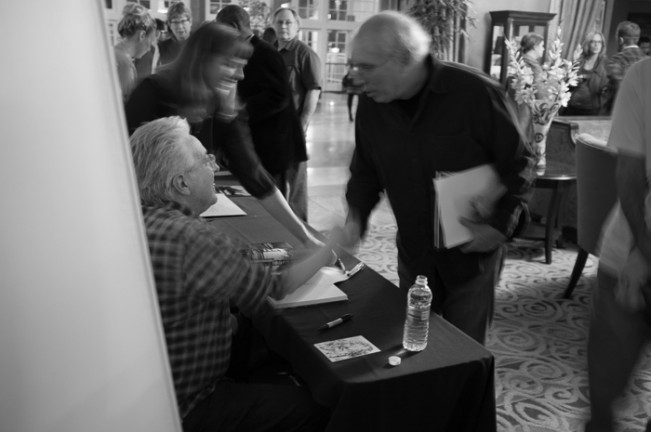
After Abelardo Morell’s keynote lecturer, attendees had the opportunity to meet with him during a reception in the Lafayette’s foyer ©Jeremias Paul

Second Sight lecturer David Emitt Adams shared his journey through photography by kicking off the lectures on Saturday morning ©Jeremias Paul
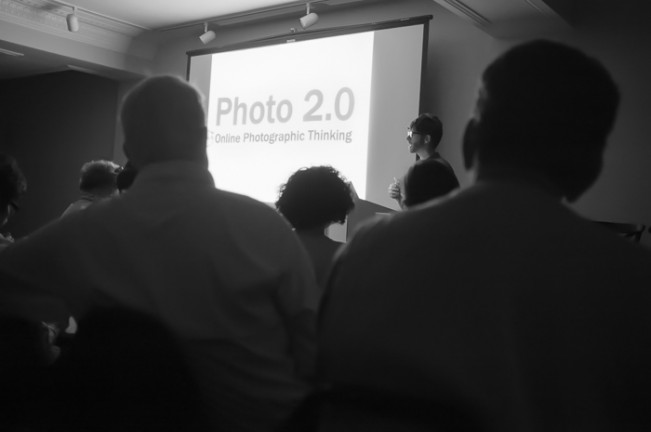
Andy Adams showed us the light during his lecture on how we should think about the different lives of the photographic image ©Jeremias Paul
KS: That’s funny, because I missed Andy! I have been trying to meet him for years now, and he was one of the few people I didn’t catch between sessions. Oh well, hi Andy. Anyway, I was grateful to be able to be there for the entire four days, consisting of two review days and two lecture days. I appreciated the decision to split up the timing and format, although I know it was hard on some attendees and reviewers who wanted to be able to do both but didn’t have the time. In the end, this format allowed for more space to unwind and relax, as well as more time to interact socially with reviewers and other photographers.
JP: For sure, the timing for the lectures and down time was wonderful. I never felt like I had to rush to grab something to eat, and I was able to have a meal with almost everyone who attended the conference. It was always about sharing in the experience and being able to process the presentations as opposed to being jolted from lecture to lecture. I also really loved the idea of this year’s introduction of Medium’s Second Sight Lecture, which featured David Emitt Adams, who was chosen by the organizers in collaboration with feedback from his reviewers from last year. David’s talk, as well as the notion of highlighting an artist from last year, was a great way to gain access into someone’s story and work in a fresh, new manner.
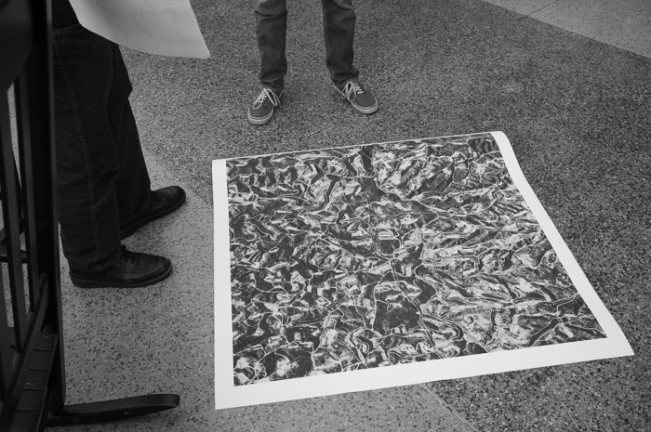
Informal portfolio sharing continued throughout the weekend, at times even on the lobby floor ©Jeremias Paul
KS: I appreciated the variety of the lectures. Scott and his team did a great job of finding photographers to present their work who represented various mediums as well as various conceptual concerns and topics. I particularly loved Doug Rickard’s talk and the lively Q & A that followed. Personally, I think his work is brilliant and touches on some incredibly forward-thinking and significant questions and issues in photography and in culture at-large, but it was also great to hear from the people who find his work problematic. Also, I agree with you about the idea of the Second Sight lecture series. I loved getting to see David Emitt Adams step into the limelight and share his brilliant work.
JP: I couldn’t agree with you more about the programming of the speakers. I just wish I wouldn’t have missed the second day, but that leaves room for improvement for me next year. The whole experience seemed to play out very positively. It’s hard to find anything to criticize. Is there anything you didn’t like about the festival?
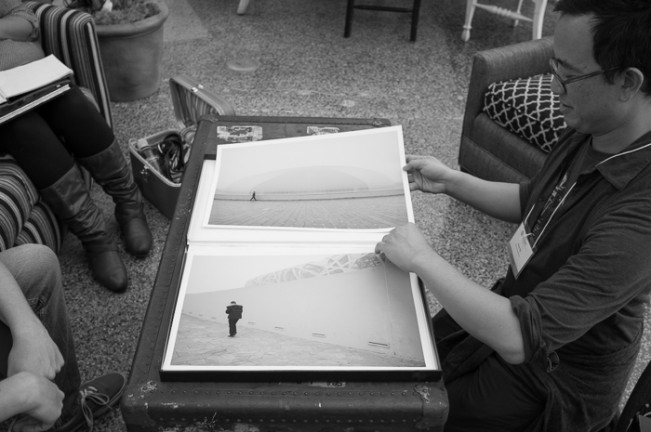
Artists overtook the Lafayette’s atrium lobby sharing their work and experiences (Jonas Yip, Lenscratch Technical Director sharing his work) ©Jeremias Paul
KS: I only have one criticism, and it’s about the location. While the Lafayette Hotel in North Park was much more casual and in a walkable neighborhood that is close to the museums of Balboa Park (including the incredible California Triennial exhibition curated by Chantel Paul at MoPA – don’t miss it!), the lack of a hot tub was a crushing blow. Yes, the hotel is retro and beautiful; yes, Bob Hope was the first guest and it has a great chill vibe, but no hot tub?! Come on!
JP: Oh, yes, there is the proverbial straw. Don’t they know that so much networking happens in the hot tub? I think we can leave it at that! Thank you so much Kurt for your thoughts, and thank you Aline for letting us share our fun times at the Medium Festival.
Jeremias Paul, born in Erlangen, Germany, has been living for the past twenty-some years in the United States, where he spends his time teaching and making art. In Jeremias’ photographic work, he is primarily interested in notions about how experiences of spaces are perceived, understood, and formed into memory. His series, Mikado, investigates how multiple photographs contextualize themselves collectively, and how their implication is changed through the eyes of each viewer’s experience with the image’s physical arrangement. Jeremias’ work can be seen at his website www.jeremiaspaul.com
Kurt Simonson is an artist/educator based in Long Beach, CA, whose work explores the tensions surrounding our ideas of home and community, pilgrimage and displacement, belonging and connecting. Whether exploring the myth and memory of his own upbringing in Minnesota, or taking intimate portraits close to home, questions about family and community remain at the heart of his curiosity. See more of his work at www.kurtsimonson.com
Posts on Lenscratch may not be reproduced without the permission of the Lenscratch staff and the photographer.
Recommended
-
Spotlight on the Photographic Arts Council Los AngelesNovember 23rd, 2025
-
100 Years of the Photobooth: Celebrating Vintage Analog PhotoboothsNovember 12th, 2025
-
100 Years of the Photobooth: The Photobooth Technicians ProjectNovember 11th, 2025
-
100 Years of the Photobooth: Rafael Hortala-Vallve: AUTOFOTONovember 10th, 2025
-
BEYOND THE PHOTOGRAPH: Q&A WITH PHOTO EDITOR JESSIE WENDER, THE NEW YORK TIMESAugust 22nd, 2025

